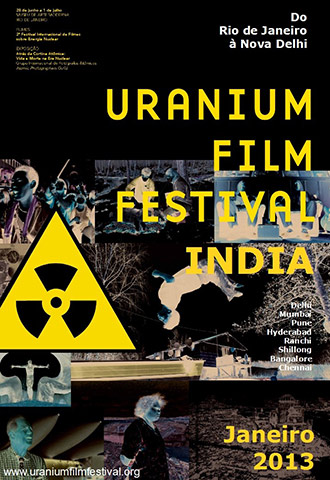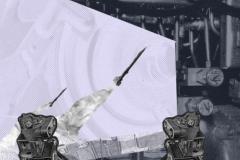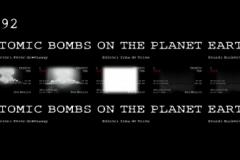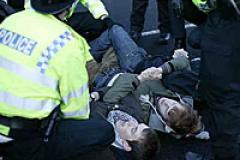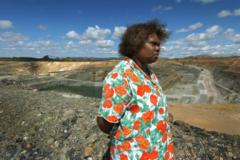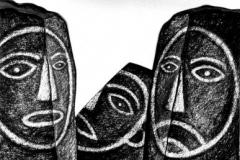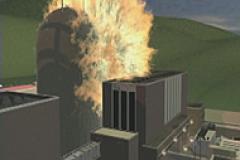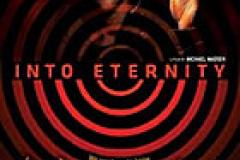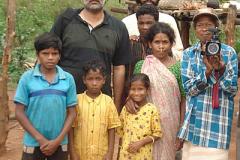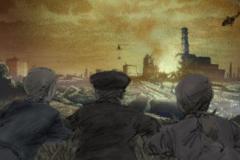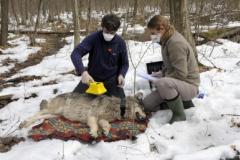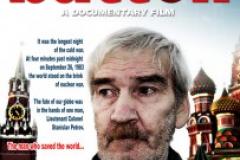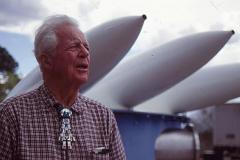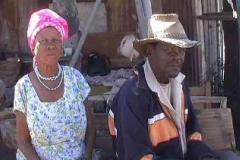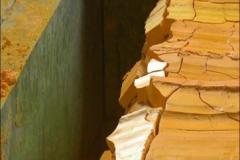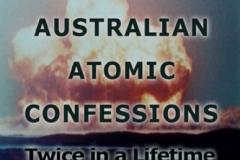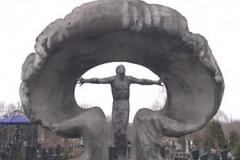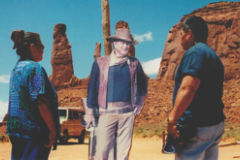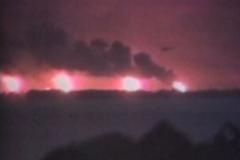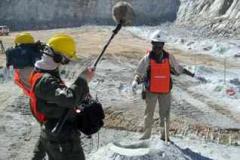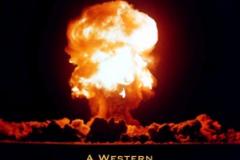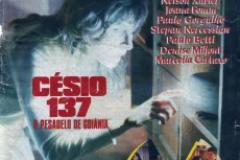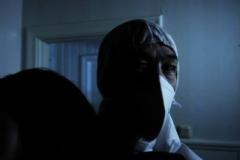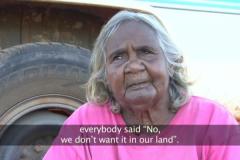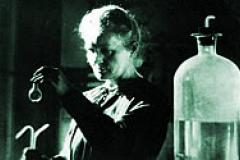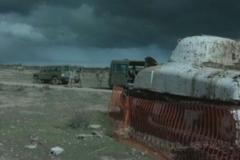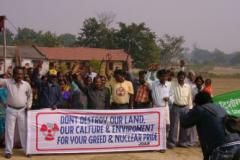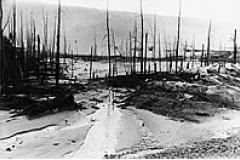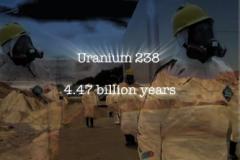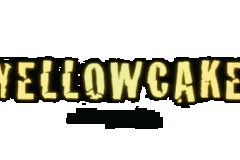 From South to South - From Rio de Janeiro to New Delhi.
From South to South - From Rio de Janeiro to New Delhi.
The Uranium Film Festival is travelling to India. Screenings of the best and most important films about Nuclear Energy, Uranium Mining and Nuclear Weapons are planned in January 2013 for New Delhi and other cities. Festival-Partner and Filmmaker Shri Prakash said, "It is important to bring the Uranium Film Festival as soon as possible to India."
Like Brazil the Government of India supports nuclear energy and Uranium mining, but only a few people there are informed about the risks. For that the Uranium Film Festival that shows independent films about that important issue will play a significant role for decision making in that country. The Uranium Film Festival of India will start in New Delhi, January 4th., 2013.
PROGRAM
Schedule Pune (27th - 31st January, 2013)
USA, 2011, 6 min, English
Animation/Experimental
Producer: Nathan Meltz
Latin American Premiere
The film remakes a section of the 1983 post-nuclear made-for- TV movie 'The Day After', retelling the story of atomic devastation in a Dada collage-meets-stop-animation style. The film showed atomic bombs reducing humans and animals to skeletons, and a city was blown to rubble.
UK/The Netherlands | 2011 | 13 min | Art & Experimental documentary
Director: Peter Greenaway, Video Design Irma de Vries
Producer: Change Performing Arts www.changeperformingarts.com | Language: Multilingual
Synopsis: Very surprisingly from 1945 to 1989 there have been 2201 atomic bombs dropped on the planet Earth - an astonishing number of atomic bombs implying huge destruction and fall-out. The film shows evidence of every bomb explosion documented with the nation responsible, the date and location, the force and the height about earth or sea level in a relentless build up of accumulating destruction that is both inspiring and dreadful in the true biblical sense of the phrase - full of dread.
Video: https://www.youtube.com/watch?v=Mc3EKAszRAw
Awards: International Uranium Film Festival Hors Concours Award, Rio de Janeiro 2012
United Kingdom, 2010, 71 min, English
Directors and Producers: Meera Patel and Wolfgang Matt
Production: Maddmovies
Documentary
A story about the biggest weapons of mass destruction ever created, the people who use them and, more importantly, the people who fight them. 'Beating the Bomb' charts the history of the British peace movement against the backdrop of the atomic age. The film also frames the nuclear weapons issue within the wider context of global justice.Beating the Bomb, United Kingdom, 2010, 71 min.
www.beatingthebomb.com, contact: maddmovies@gmail.com
"Beating the Bomb" was selected by the Uranium Film Festival Jury as one of the eight best documentaries of the festival.
Best documentary award, Red Rock Film Festival, Utah, USA
Australia, 1980-2011, 51 min
English/Gunwinku, English Subtitles
Uranium mining was imposed on the Traditional Owners of Kakadu, Australia in the late 1970s and the controversial Ranger mine commenced production in 1981. Three decades later Kakadu uranium is still shipped out of Darwin to fuel nuclear reactors in Japan, Europe and elsewhere.
The film includes rare footage of Mirarr Senior Traditional Owner Toby Gangale stating clear opposition to mining on his country and documents his prescient concerns about uranium. It shows how the Federal Government overrode the human rights of Kakadu's Traditional Owners in order to impose a toxic industry in a World Heritage Area. The film provides a unique insight into a story that continues to generate heartache and headlines today.
USA | 1997 | 9 min | Animation
Director: Karen AQUA (1954 - May 30th, 2011) | Music by Ken Field
Language: No Dialogue
Synopsis: In south-central New Mexico, an ancient Native American rock art site lies 35 miles from the detonation site of the world’s first atomic bomb. The juxtaposition of these sites points to the striking contrast between the two worlds which created them: one which reveres and lives in harmony with the natural world, and one which, in striving to control the forces of nature, has created a means for its destruction. Film director's website: http://karenaqua.com
Awards:
Humboldt International Film Festival, CA, 1998: 1st Prize, Animation
Marin County National Festival of Short Films, CA, 1998: 1st Prize, Animation
Green Extreme Film Festival, Canada, 1999: Best Environmental Film
Prix Leonardo, Italy, 1999: Gold Certificate
International Uranium Film Festival SPECIAL ACHIEVEMENT AWARD 2012
USA, 2003, 29 min, English
Documentary
Latin American Premiere
Shows the impossibility of evacuation at Indian Point nuclear power plant outside NY City. Produced after the 9/11 terror attack on New York City and the terrorists announced they had targeted the Indian Point Nuclerar Power station but decided to fly by it to the Twin Towers instead.
Tobe Carey will attend the screening (New York, 2014).
Denmark, 2010, 75 min
Director: Michael Madsen
Producer: Lise Lense-Möller / Magic Hour Films
This film explores the question of preparing the site so that it is not disturbed for 100,000 years, even though no structure in human history has stayed standing for such a long period of time.
"Every day, the world over, large amounts of high-level radioactive waste created by nuclear power plants is placed in interim storage, which is vulnerable to natural disasters, man-made disasters, and societal changes. In Finland, the world's first permanent repository is being hewn out of solid rock – a huge system of underground tunnels – that must last the entire period the waste remains hazardous: 100,000 years."
Once the repository waste has been deposited and is full, the facility is to be sealed off and never opened again. Or so we hope, but can we ensure that? And how is it possible to warn our descendants of the deadly waste we left behind? How do we prevent them from thinking they have found the Giza pyramids of our time, mystical burial grounds, hidden treasures? Which languages and signs will they understand? And if they understand, will they respect our instructions?
Experts above ground strive to find solutions to this crucially important radioactive waste issue to secure mankind and all species on planet Earth now and in the near and very distant future."
Into Eternity won the Jury Award as the best feature film of the 1st International Uranium Film Festival of Rio de Janeiro 2011.
India | 2009 | 9 min | Documentary
Director: Shri Prakash
Original Language: English
Jadugoda is an area in the state of Bihar populated by Adivasi (tribal peoples of India). It first came into prominence when uranium deposits were discovered in the area, since Jadugoda is India's only underground uranium mine. The film documents the devastating effects of uranium mining by Uranium Corporation of India Limited in Jadugoda. For the last thirty years, the radioactive wastes have been just dumped into the rice field of the Adivasis.
Film website: http://shriprakash.com/films/jaadugoda-the-black-magic
Germany / Ukraine, 2011, 19 min, Russian, English Subtitles
Animated documentary
Producer: Tetyana Chernyavska
Yellow Oscar Best Animation Film 2012
A Soviet family searching for a modest paradise is swept into an immense disaster. This magically animated film combines drawing, photography and documentary video to capture the surreal emotions of the too-real tragedy: Chernobyl 1986.
(Radioaktive Wölfe)
Austria, 2011, 52 min, German/English Subtitle
Production ORF, NDR, WNET & Epo-film
Latin American Premiere
25 years after the biggest nuclear accident in history, wolves reign the radio-actively contaminated no-man's-land, the so-called exclusion zone, of Chernobyl, which stretches from Ukraine into Belarus and Russia. After the explosion of the Chernobyl reactor on April 26, 1986, one city and some 150 villages were evacuated. About 340.000 people were displaced. Uninhibited by the presence of humans, a profusion of wild species has since taken over a territory of about 3.000 square kilometers, creating a new wilderness. At the top of this eco-system is the wolf. Rumors about wolves in the zone have been numerous, but hard facts are still rare. Curious about these rumors, Christoph and Barbara Promberger, carnivore experts from Germany and Austria who have conducted wolf studies around the world visited the zone in 2009 to get a personal impression. They were overwhelmed by the obviously numerous presence of wolves in what has been called the Chernobyl Jungle and is officially the Polessie Radio-Active Reserve.
Poland/USA, 2011, 52 min, Russian, English subtitles
Production: Miroslaw Grubek, Slawomir Grunberg
Documentary
Yellow Oscar Nomination
The Red Button is a 52-minute documentary film that tells the dramatic story of Stanislav Petrov, the Russian officer who, in 1983, saved the world from atomic war.
During the early '80s, the Russian leader was Jurij Andropov, the most right-wing Soviet leader since Stalin. A known hardliner, Andropov was very wary of US activity. It was an intense period of time in the relationship between the United States and Russia. Tensions were running high between the two superpowers, and the atmosphere was suspicious because of recent incidents. On September 5th, a Korean jet liner with 269 passengers, many of whom were American, had been shot down over Soviet territory because the Russians believed it was a spy mission. The action led Reagan to label Russia an "evil empire." Soon after, the KGB communicated to the western operatives to prepare for possible nuclear war. It is now thought that throughout 1983, the Kremlin assumed that the US and its allies were planning a nuclear strike on the Soviet Union.
So it was in this tense environment that Stanislav Petrov worked deep inside Serpukhov-15, a secret bunker, monitoring early warning satellites. On September 26, 1983, Pietrow was in charge of monitoring American missiles that could potentially be sent to Russia to start a nuclear war. It was not his normal duty; he was to man the post twice a month just to keep his skills from getting rusty. Shortly after midnight, Petrov noticed a missile on his screen. Thinking it was a possible error, he nervously ignored it and waited for any other indications of war. Several minutes later, things became much more serious: four more missiles appeared and a flashing red warning sign began asking him to confirm an incoming attack. By pressing the red button, Petrov would have sent the information up the chain of command to Jurij Votincev, the Commander in Chief of the Russian missile defense, and then to Jurij Andropov who was in charge of the new "nuclear suitcase" and who would have undoubtedly called for a counterattack.
Petrov knew he only had about fifteen minutes to decide what he would do before the missiles would reach the Soviet Union. If he didn't pass the information along, Petrov would be ignoring orders and taking responsibility into his own hands. The protocol, which Petrov had written himself, clearly indicated that the correct course of action would be to inform the Commander in Chief. 120 panicked military officers and engineers sat behind him, looking at the screen and waiting for his decision. "Everyone jumped from their seats looking at me," says Petrov. "What could I do? There was a procedure that I had written myself." The future of the world was in the 44-year-old Russian officer's hands as he wrestled with the decision of whether or not to use Russia's atomic button. In a bold move, however, Petrov decided against it, blaming the signals on faulty equipment instead of imperialistic aggression. At the time, he was not sure he had made the right choice.
Fortunately for all of us, Petrov made the correct decision. His reasoning was that if the Americans were going to start an atomic war, they would have sent hundreds of missiles, not just five.
(Los Alamos. Und die Erben der Bombe.)
Germany, 2003, 45 min, English
Production: Denkmal-Film / Hessischer Rundfunk / arte
Latin American Premiere
Hidden in the mountains of Northern New Mexico lies the birthplace of the Atomic Age: Los Alamos, home of the "Manhattan Project". Here Robert J. Oppenheimer and his staff created the first atomic bomb, "Trinity", the scientific prototype to "Little Boy" and "Fat Man," the bombs which hastened the end of World War II by leveling Hiroshima and Nagasaki. Although the laboratory is today also a leading center of genetic research, it remains a place of secrecy, for its main mission is to maintain the existing nuclear arsenal - a task that hides behind the name, "Stockpile Stewardship". The secret meets the sacred upon the mesa of Los Alamos. The lab takes up forty-three square miles - indigenous land of the Tewa people from the pueblos Santa Clara and San Ildefonso. The local Indians are cut off from their traditional shrines of worship: their prayer sites are either fenced off or contaminated. One of the sacred places contains the petroglyph of Avanyu, the mythic serpent that is the guardian of the springs. The Avanyu petroglyph was created long before the first White man set foot on the continent. According to tribal wisdom, those who poison the water must face Avanyu's fiery revenge. The local ground water has been contaminated by decades of the laboratory's uncaring. Warnings from the pueblos' spiritual leaders to laboratory officials fell upon deaf ears. At the laboratory, formulas pull rank on myths.
Following discussion with the director, Munich 2013
Belarus, 1990, 26 min, English
Latin American Premiere
"To Whom It May Concern" is a record of broken people's lives in Belarus five years after the Chernobyl power plant explosion. It shows the plight of children and their parents who have been eating low level radiation food. It is an attempt to warn the rest of humanity to the danger of being exposed not only to radiation but to the undisclosed truth. The film was produced 5 years after the Chernobyl nuclear explosion happened. Becoming sick as a result of exposure to the low dose radation for 5 years, and fearing for the health of her then 7 year old son, director/ producer Galina Sanderson decided to attract international attention to the situation in Belarus. The State run media was not allowed (and still is not) to reveal any factual health related information or sócio-psychological effects of the accident, and the director/producer had to quit her position in Belorussian State TV in order to make this film.
Brazil, 2010, 27 min, English with German subtitles
This documentary is about uranium mining and uranium prospecting in Namibia and its effects on the local population, environment and the scarce water resources of the Kuiseb Valey. Namibia has 2 uranium mines. Another 10 are planned. Exploration is going on in the territory of the Topnaar-Nama people. Their natural resources, their water and life are jeopardized. Uranium mining is not only producing radioactive dust. It is also wasting huge amounts of water, which is destructive for the homeland of the Topnaar-Nama. Centre of the film are the Nama villages along the Kuiseb and Nama King Samuel Khaxab, who started a campaign to inform his people about the radioactive and environmental risks of Uranium mines. "We want to stop the uranium mining", he says. The Nama are parents of the San living in the Kalahari. They share the same language family based on click and clack sounds. German colonizers once expelled the Nama (called Hottentot) from most of their land along the Namibian coast because it was rich in diamonds. Later they were expelled from nearly the rest of their land in the name of nature conservation. What is left is the Kuiseb Valey.
"Uranium Thirst" and "Uranium Not in Nisa" are not part of the competive category of the Uranium Film Festival.
(Uranium, l'héritage empoisonné)
France | 52 min | Documentary
Director: Dominique Hennequin | Producer: Nomades TV
Language: French and English
Synopsis: A shocking investigation into uranium mining in Africa. We visit three areas affected by the uranium industry; Mounana where activity has now ceased, Arlit, where the mines have been active for 40 years, and Imouraren, a future site. French energy giant Areva pulled out of Mounana, Gabon, in 1999. The uranium mine, Comuf, was closed down and covered over. In fact, at a glance, it’s almost as if the mine never existed. However, Mounana suffers from extremely dangerous levels of radioactive pollution. The soil and the rivers are toxic; even the houses have a Geiger count as much as 8 times the safe limit. They were built using radioactive material.
In Arlit, North Niger, we encounter similar problems, including an abnormally high incidence of lung cancer. Now that Areva has left, the former miners are left to pay for their own health care. In spite of the horrific damage to local populations at previous sites, another mine is being constructed, in Imouraren. The result of a colossal deal between the governments of France and Niger, this will be their biggest open mine yet. Areva claims that the new mine will not poison the land, but local people are sceptical.
Film website: http://www.javafilms.fr/spip.php?article311
Australia, 2010, 35 min, English
Documentary
The film combines comedy and serious content to explain the dangers of uranium mining, the nuclear fuel cycle and the use of depleted nuclear materials – much of which originates in Australian uranium mines – in weapons production. The message is simple and clear: Despite assurances from the mining companies, there is NO SAFE LEVEL of radiation exposure, below which there is no risk of cancer or birth defects occurring. "When The Dust Settles" is a must-see educational presentation for workers contemplating working in the uranium industry and for Electrical Trades Union members and workers across Queensland and the Northern Territory.
Schedule - January 4-6, New Delhi (Siri Fort Auditorium - III - South Delhi)
Australia, 2005, 49 min, English and Aboriginal Australian
Documentary
Latin American Premiere
Sacrificial lambs to the slaughter. Eyewitnesses tell the true story of what happend during the 12 British atomic bomb tests in Australia. The film is a chilling expose of nuclear testing and the demaging legacy that continues these day.
United Kingdom, 2010, 71 min, English
Directors and Producers: Meera Patel and Wolfgang Matt
Production: Maddmovies
Documentary
A story about the biggest weapons of mass destruction ever created, the people who use them and, more importantly, the people who fight them. 'Beating the Bomb' charts the history of the British peace movement against the backdrop of the atomic age. The film also frames the nuclear weapons issue within the wider context of global justice.Beating the Bomb, United Kingdom, 2010, 71 min.
www.beatingthebomb.com, contact: maddmovies@gmail.com
"Beating the Bomb" was selected by the Uranium Film Festival Jury as one of the eight best documentaries of the festival.
Best documentary award, Red Rock Film Festival, Utah, USA
(Verstrahlt und vergessen, Tschernobyl und die Folgen)
Germany, 2006, 59 min, German/ Russian, English Subtitle
Production: ARTE – WDR
Brazilian Premiere
April 26th 1986. The day a nightmare scenario became horrific reality: the day reactor block 4 of the Chernobyl atomic power station exploded. While researching and filming this project filmmaker Christoph Boekel met numerous victims of the atomic catastrophe. His own wife was one them and she, too, died of cancer. A moving film told from the personal perspective of the director, it is a requiem for the often forgotten victims of the disaster and a caveat against putting blind trust in technological advancement.
Denmark, 2010, 75 min
Director: Michael Madsen
Producer: Lise Lense-Möller / Magic Hour Films
This film explores the question of preparing the site so that it is not disturbed for 100,000 years, even though no structure in human history has stayed standing for such a long period of time.
"Every day, the world over, large amounts of high-level radioactive waste created by nuclear power plants is placed in interim storage, which is vulnerable to natural disasters, man-made disasters, and societal changes. In Finland, the world's first permanent repository is being hewn out of solid rock – a huge system of underground tunnels – that must last the entire period the waste remains hazardous: 100,000 years."
Once the repository waste has been deposited and is full, the facility is to be sealed off and never opened again. Or so we hope, but can we ensure that? And how is it possible to warn our descendants of the deadly waste we left behind? How do we prevent them from thinking they have found the Giza pyramids of our time, mystical burial grounds, hidden treasures? Which languages and signs will they understand? And if they understand, will they respect our instructions?
Experts above ground strive to find solutions to this crucially important radioactive waste issue to secure mankind and all species on planet Earth now and in the near and very distant future."
Into Eternity won the Jury Award as the best feature film of the 1st International Uranium Film Festival of Rio de Janeiro 2011.
Poland/USA, 2011, 52 min, Russian, English subtitles
Production: Miroslaw Grubek, Slawomir Grunberg
Documentary
Yellow Oscar Nomination
The Red Button is a 52-minute documentary film that tells the dramatic story of Stanislav Petrov, the Russian officer who, in 1983, saved the world from atomic war.
During the early '80s, the Russian leader was Jurij Andropov, the most right-wing Soviet leader since Stalin. A known hardliner, Andropov was very wary of US activity. It was an intense period of time in the relationship between the United States and Russia. Tensions were running high between the two superpowers, and the atmosphere was suspicious because of recent incidents. On September 5th, a Korean jet liner with 269 passengers, many of whom were American, had been shot down over Soviet territory because the Russians believed it was a spy mission. The action led Reagan to label Russia an "evil empire." Soon after, the KGB communicated to the western operatives to prepare for possible nuclear war. It is now thought that throughout 1983, the Kremlin assumed that the US and its allies were planning a nuclear strike on the Soviet Union.
So it was in this tense environment that Stanislav Petrov worked deep inside Serpukhov-15, a secret bunker, monitoring early warning satellites. On September 26, 1983, Pietrow was in charge of monitoring American missiles that could potentially be sent to Russia to start a nuclear war. It was not his normal duty; he was to man the post twice a month just to keep his skills from getting rusty. Shortly after midnight, Petrov noticed a missile on his screen. Thinking it was a possible error, he nervously ignored it and waited for any other indications of war. Several minutes later, things became much more serious: four more missiles appeared and a flashing red warning sign began asking him to confirm an incoming attack. By pressing the red button, Petrov would have sent the information up the chain of command to Jurij Votincev, the Commander in Chief of the Russian missile defense, and then to Jurij Andropov who was in charge of the new "nuclear suitcase" and who would have undoubtedly called for a counterattack.
Petrov knew he only had about fifteen minutes to decide what he would do before the missiles would reach the Soviet Union. If he didn't pass the information along, Petrov would be ignoring orders and taking responsibility into his own hands. The protocol, which Petrov had written himself, clearly indicated that the correct course of action would be to inform the Commander in Chief. 120 panicked military officers and engineers sat behind him, looking at the screen and waiting for his decision. "Everyone jumped from their seats looking at me," says Petrov. "What could I do? There was a procedure that I had written myself." The future of the world was in the 44-year-old Russian officer's hands as he wrestled with the decision of whether or not to use Russia's atomic button. In a bold move, however, Petrov decided against it, blaming the signals on faulty equipment instead of imperialistic aggression. At the time, he was not sure he had made the right choice.
Fortunately for all of us, Petrov made the correct decision. His reasoning was that if the Americans were going to start an atomic war, they would have sent hundreds of missiles, not just five.
USA 2000/2008 | 57 min and 15 min Epilogue | Documentary
Director: Jeff Spitz | Produced by Jeff Spitz and Bennie Klain
The film chronicles an extraordinary chain of events, beginning with the appearance of a 1950s film reel, which lead to the return of a long lost brother to his Navajo family. Living for more than six decades in Monument Valley (on the Arizona/Utah border), the Cly family has an extraordinary history in pictures. Since the1930′s, family members have appeared as unidentified subjects in countless photographs and films shot in Monument Valley including various postcards, Hollywood Westerns and a rare home-movie by legendary director John Ford. But it is the sudden appearance of a rarely seen vintage film that affects their lives the most. With the return of “Navajo Boy,” Elsie seizes the opportunity to tell her family’s story for the first time, offering a unique perspective to the history of the American west. Using a variety of still photos and moving images from the 40s and 50s and telling their family story in their own voices, the Clys shed light on the Native side of picture making and uranium mining in Monument Valley.
The Return of Navajo Boy, an official selection of the Sundance Film Festival and PBS, is an internationally acclaimed documentary that reunited a Navajo family and triggered a federal investigation into uranium contamination. It tells the story of Elsie Mae Begay, whose history in pictures reveals an incredible and ongoing struggle for environmental justice. A powerful new epilogue (produced in 2008) shows how the film and Groundswell Educational Films’ outreach campaign create news and rally supporters including Congressman Henry Waxman (D-CA). The Chairman of the Committee on Oversight and Government Reform mandated a clean-up plan by the five agencies that are responsible for uranium contamination.
The documentary, epilogue and now 15 webisodes have leveraged several remarkable impacts: Bernie Cly, one of the Navajo family featured, has been awarded $100,000 in compensation from the US government; the EPA demolished a dangerous house made out of uranium which was featured in the film and completed its $8 million dollar clean up of the abandoned uranium mine located in the backyard of the Navajo family featured in the documentary. The most recent webisode in April 2014, informs viewers that the Navajo tribe won the largest environmental settlement in American history, $1 billion payout from Kerr-McGee, the corporate contaminator exposed by the documentary.
Filmwebsite: www.navajoboy.com
Awards:
2000, Best Documentary, Indian Summer Festival
2000, Programmer's Choice Award, Planet in Focus Film Festival, Canada
2000, Audience Award, Durango International Film Festival
2000, Official Selection, Sundance Film Festival
(La Terza Bomba Nucleare, Le Accuse del Veterano)
Italy, 2008, 26 min, English
Production: Rainews24 / Radio Televisione Italiana
Latin American Premiere
In the investigative report, an American veteran who participated in "Desert Storm" accuses the Us Administration of having used a small nuclear penetration bomb with an energy of 5 kilotons between the Iraqi town of Basra and the border with Iran. Consulting the "Seismological International Center on line data archive" we found that in the area indicated by the veteran, a seismic event with a power of 5 kilotons was registered the last day of the conflict.
Following discussion with the director, Munich 2013
(Uranium, l'héritage empoisonné)
France | 52 min | Documentary
Director: Dominique Hennequin | Producer: Nomades TV
Language: French and English
Synopsis: A shocking investigation into uranium mining in Africa. We visit three areas affected by the uranium industry; Mounana where activity has now ceased, Arlit, where the mines have been active for 40 years, and Imouraren, a future site. French energy giant Areva pulled out of Mounana, Gabon, in 1999. The uranium mine, Comuf, was closed down and covered over. In fact, at a glance, it’s almost as if the mine never existed. However, Mounana suffers from extremely dangerous levels of radioactive pollution. The soil and the rivers are toxic; even the houses have a Geiger count as much as 8 times the safe limit. They were built using radioactive material.
In Arlit, North Niger, we encounter similar problems, including an abnormally high incidence of lung cancer. Now that Areva has left, the former miners are left to pay for their own health care. In spite of the horrific damage to local populations at previous sites, another mine is being constructed, in Imouraren. The result of a colossal deal between the governments of France and Niger, this will be their biggest open mine yet. Areva claims that the new mine will not poison the land, but local people are sceptical.
Film website: http://www.javafilms.fr/spip.php?article311
Australia, 2010, 35 min, English
Documentary
The film combines comedy and serious content to explain the dangers of uranium mining, the nuclear fuel cycle and the use of depleted nuclear materials – much of which originates in Australian uranium mines – in weapons production. The message is simple and clear: Despite assurances from the mining companies, there is NO SAFE LEVEL of radiation exposure, below which there is no risk of cancer or birth defects occurring. "When The Dust Settles" is a must-see educational presentation for workers contemplating working in the uranium industry and for Electrical Trades Union members and workers across Queensland and the Northern Territory.
Germany | 2010/2014 | 35 min (Short version) | Documentary
Director: Joachim Tschirner
Original Language: English
Web site: www.umweltfilm.de
This new short version of the feature documentary "Yellow Cake. The dirt behind Uranium" focuses on a secret uranium mine in East Germany, that produced for decades yelllow cake for the Sovjet Union's atomic bombs. It was the third largest uranium mine in the world, located in the provinces of Saxony and Thuringia. Operating until the Reunification, it had the code name WISMUT - German for bismuth. The film tells the history of the Wismut and accompanies for several years the first clean-up operation in the history of uranium mining.
Film website: www.yellowcake-derfilm.de
Awards:
YELLOW OSCAR, Best Short Documentary, International Uranium Film Festival Rio 2014
Schedule Hyderabad (23rd-25th January, 2013)
USA, 2011, 6 min, English
Animation/Experimental
Producer: Nathan Meltz
Latin American Premiere
The film remakes a section of the 1983 post-nuclear made-for- TV movie 'The Day After', retelling the story of atomic devastation in a Dada collage-meets-stop-animation style. The film showed atomic bombs reducing humans and animals to skeletons, and a city was blown to rubble.
Brazil, 2002, 4 min, Portuguese
Fiction
One of the first victims of the radioactive accident of Goiânia with Cesium-137 September 1987 was a 6 year old child. Leide das Neves had no time to play.
UK/The Netherlands | 2011 | 13 min | Art & Experimental documentary
Director: Peter Greenaway, Video Design Irma de Vries
Producer: Change Performing Arts www.changeperformingarts.com | Language: Multilingual
Synopsis: Very surprisingly from 1945 to 1989 there have been 2201 atomic bombs dropped on the planet Earth - an astonishing number of atomic bombs implying huge destruction and fall-out. The film shows evidence of every bomb explosion documented with the nation responsible, the date and location, the force and the height about earth or sea level in a relentless build up of accumulating destruction that is both inspiring and dreadful in the true biblical sense of the phrase - full of dread.
Video: https://www.youtube.com/watch?v=Mc3EKAszRAw
Awards: International Uranium Film Festival Hors Concours Award, Rio de Janeiro 2012
Australia, 2005, 49 min, English and Aboriginal Australian
Documentary
Latin American Premiere
Sacrificial lambs to the slaughter. Eyewitnesses tell the true story of what happend during the 12 British atomic bomb tests in Australia. The film is a chilling expose of nuclear testing and the demaging legacy that continues these day.
United Kingdom, 2010, 71 min, English
Directors and Producers: Meera Patel and Wolfgang Matt
Production: Maddmovies
Documentary
A story about the biggest weapons of mass destruction ever created, the people who use them and, more importantly, the people who fight them. 'Beating the Bomb' charts the history of the British peace movement against the backdrop of the atomic age. The film also frames the nuclear weapons issue within the wider context of global justice.Beating the Bomb, United Kingdom, 2010, 71 min.
www.beatingthebomb.com, contact: maddmovies@gmail.com
"Beating the Bomb" was selected by the Uranium Film Festival Jury as one of the eight best documentaries of the festival.
Best documentary award, Red Rock Film Festival, Utah, USA
Spain, 2010, 12 min
Animation
Producer: Abrakam Estudio
A terrible industrial accident changes DINKI's life forever. Now DINKI's fate may ride on the wings of her eccentric friend BIRDBOY, a misfit who hides in the Dead Forest, lost in his fantasies...
Australia, 2005, 62 min, English
Production: Frontline Film Foundation
Documentary
Latin American Premiere
Blowin' in the Wind examines the secret treaty that allows the US military to train and test its weaponry on Australian soil. It looks at the impact of recycled uranium weapons and the far-reaching physical and moral effects on every Australian. The film's release has been timely as the government currently moves to approve more uranium mines while arguing the contrary - that by going nuclear we are being both 'safe' and 'green'. The film reveals that Iraqi babies are now being born with major birth defects. Bradbury wonders whether Australians living downwind from the military testing ranges will be next. He argues that we were lied to by the British over the Woomera and Maralinga atomic tests. Can we trust another equally powerful partner in our 'war on terror'?
With a cash budget of just $12,000 the film raises pertinent questions which cannot be ignored by the Australian public. The film shocked, angered and surprised large audiences when shown at the Sydney and Brisbane Film Festivals.
www.frontlinefilms.com.au/videos/blowin.htm
USA, 2006, 6 min, English
Animation
Latin America Premiere
An experimental "Western" environmental expose on the burial of 17,500,000 cubic feet of radioactive and other toxic waste disposed of during the Cold War by Los Alamos National Labs, in unlined pits in the Earth. This radioactive waste has contaminated groundwater, and deep aquifer water, affecting indigenous communities and surrounding land.
South-Africa, 2009, 50 min, English & Africaans
Latin American Premiere
Inspired by a dream of nuclear waste as a malignant tumour in the earths skin a woman journalist sets off on a road trip. She follows the route taken by the trucks carrying nuclear waste from the nuclear power plant in Cape Town to their destination in the pristine semi-desert region of Namaqualand. There she meets men and women of the Nama-Khoi tribe, who live in the area, and listens to their untold stories. Over 8 years, her investigation leads her to the homes of other communities living and working in close proximity to nuclear facilities - from nuclear fuel manufacturing plants to nuclear waste dumps and future nuclear power plant sites. Buried in Earthskin subtly demonstrates how energy and political power go hand in hand, and gives a voice to marginalized indigenous peoples who have paid the ultimate price for decisions made (about where we get our electric power) for the sake of political and financial power.
Brazil, 1989, 95 min, Portuguese, English subtitles
Producer: Laura Pires
Doc Fiction
AUDIENCE AWARD BEST FEATURE FILM 2011
In the ruins of a demolished hospital for cancer treatment in the centre of the Brazilian city Goiânia, two young men found an old "forgotten" Teletherapy Unit, which contained a highly radioactive "Caesium 137 bomb". They sold it to a local scrap metal dealer, who opened that Pandora's box. People were fascinated by the dazzling blue light of the caesium crystals. But they did not know, that it was the shine of the death. Hundreds if not thousands of the citizens and visitors of Goiânia became victims of Caesium 137. The script of the movie is based on statements by the victims and medical personal attending the victims, taken by Roberto Pires at the time of the accident.
(Verstrahlt und vergessen, Tschernobyl und die Folgen)
Germany, 2006, 59 min, German/ Russian, English Subtitle
Production: ARTE – WDR
Brazilian Premiere
April 26th 1986. The day a nightmare scenario became horrific reality: the day reactor block 4 of the Chernobyl atomic power station exploded. While researching and filming this project filmmaker Christoph Boekel met numerous victims of the atomic catastrophe. His own wife was one them and she, too, died of cancer. A moving film told from the personal perspective of the director, it is a requiem for the often forgotten victims of the disaster and a caveat against putting blind trust in technological advancement.
Australia, 1980-2011, 51 min
English/Gunwinku, English Subtitles
Uranium mining was imposed on the Traditional Owners of Kakadu, Australia in the late 1970s and the controversial Ranger mine commenced production in 1981. Three decades later Kakadu uranium is still shipped out of Darwin to fuel nuclear reactors in Japan, Europe and elsewhere.
The film includes rare footage of Mirarr Senior Traditional Owner Toby Gangale stating clear opposition to mining on his country and documents his prescient concerns about uranium. It shows how the Federal Government overrode the human rights of Kakadu's Traditional Owners in order to impose a toxic industry in a World Heritage Area. The film provides a unique insight into a story that continues to generate heartache and headlines today.
Sweden, 2011, 14 min 30, Swedish/English Subtitle
Latin American and Indian Premiere
Yellow Oscar Best Short Film 2012
During a coffee break two men, wearing protective suits, are having a conversation about Chernobyl, Harrisburg, Forsmark and nuclear meltdowns.
Back at work their lack of empathy makes them true professionals.
And someone else becomes a victim. Coffee Break is a comedy-thriller.
USA, 2012, 18 min, Japanese/English, English subtitles
Producer: Yoko Kumano
Documentary
World Premiere
The film addresses the isue of radiation in food after the March 11, 2011, Fukushima desaster. The film features interviews with food producers, restaurant owners and new parents about the food consumption has changed after the nuclear accident and the contamination of the food chain with radioactive elements.
USA | 1997 | 9 min | Animation
Director: Karen AQUA (1954 - May 30th, 2011) | Music by Ken Field
Language: No Dialogue
Synopsis: In south-central New Mexico, an ancient Native American rock art site lies 35 miles from the detonation site of the world’s first atomic bomb. The juxtaposition of these sites points to the striking contrast between the two worlds which created them: one which reveres and lives in harmony with the natural world, and one which, in striving to control the forces of nature, has created a means for its destruction. Film director's website: http://karenaqua.com
Awards:
Humboldt International Film Festival, CA, 1998: 1st Prize, Animation
Marin County National Festival of Short Films, CA, 1998: 1st Prize, Animation
Green Extreme Film Festival, Canada, 1999: Best Environmental Film
Prix Leonardo, Italy, 1999: Gold Certificate
International Uranium Film Festival SPECIAL ACHIEVEMENT AWARD 2012
USA, 2003, 29 min, English
Documentary
Latin American Premiere
Shows the impossibility of evacuation at Indian Point nuclear power plant outside NY City. Produced after the 9/11 terror attack on New York City and the terrorists announced they had targeted the Indian Point Nuclerar Power station but decided to fly by it to the Twin Towers instead.
Tobe Carey will attend the screening (New York, 2014).
Denmark, 2010, 75 min
Director: Michael Madsen
Producer: Lise Lense-Möller / Magic Hour Films
This film explores the question of preparing the site so that it is not disturbed for 100,000 years, even though no structure in human history has stayed standing for such a long period of time.
"Every day, the world over, large amounts of high-level radioactive waste created by nuclear power plants is placed in interim storage, which is vulnerable to natural disasters, man-made disasters, and societal changes. In Finland, the world's first permanent repository is being hewn out of solid rock – a huge system of underground tunnels – that must last the entire period the waste remains hazardous: 100,000 years."
Once the repository waste has been deposited and is full, the facility is to be sealed off and never opened again. Or so we hope, but can we ensure that? And how is it possible to warn our descendants of the deadly waste we left behind? How do we prevent them from thinking they have found the Giza pyramids of our time, mystical burial grounds, hidden treasures? Which languages and signs will they understand? And if they understand, will they respect our instructions?
Experts above ground strive to find solutions to this crucially important radioactive waste issue to secure mankind and all species on planet Earth now and in the near and very distant future."
Into Eternity won the Jury Award as the best feature film of the 1st International Uranium Film Festival of Rio de Janeiro 2011.
India | 2009 | 9 min | Documentary
Director: Shri Prakash
Original Language: English
Jadugoda is an area in the state of Bihar populated by Adivasi (tribal peoples of India). It first came into prominence when uranium deposits were discovered in the area, since Jadugoda is India's only underground uranium mine. The film documents the devastating effects of uranium mining by Uranium Corporation of India Limited in Jadugoda. For the last thirty years, the radioactive wastes have been just dumped into the rice field of the Adivasis.
Film website: http://shriprakash.com/films/jaadugoda-the-black-magic
Germany / Ukraine, 2011, 19 min, Russian, English Subtitles
Animated documentary
Producer: Tetyana Chernyavska
Yellow Oscar Best Animation Film 2012
A Soviet family searching for a modest paradise is swept into an immense disaster. This magically animated film combines drawing, photography and documentary video to capture the surreal emotions of the too-real tragedy: Chernobyl 1986.
Australia, 2010, 10 min
Documentary
Muckaty Voices is a short film capturing Aboriginal community resistance to an Australian government plan to dump low and long lived intermediate level radioactive waste at Muckaty Station, 120km north of Tennant Creek in the Northern Territory. The government's push for Muckaty has sparked widespread criticism from the targeted community, trade unions, national health and environment groups and Indigenous organizations. A federal court challenge has been launched to contest the Muckaty nomination. The film presents the country and community affected by this proposal.
The film was produced for the Muckaty Traditional Owners by Enlightning Productions, with support of Beyond Nuclear Initiative: www.beyondnuclearinitiative.com
USA, 2010, 73 min, English
Documentary
Latin American Premiere
Yellow Oscar Best Feature Film 2012
For much of the twentieth century the United States Department of Defense was a major producer of radioactive waste. The Pentagon not only produced its own nuclear waste. For years, the Pentagon depended on an unknown number of private defense contractors to supply countless radioactive parts and equipment. In the mid-twentieth century, the U.S. government actually gave some of these defense contractors permission to dump radioactive waste on their private properties.
The Pentagon seldom, if ever, disclosed the whereabouts of these dangerous nuclear dumps. The problem becomes one for the ages: many of these radioactive isotopes remain dangerous and "hot" for thousands of years, even as the radiation is invisible to unsuspecting victims.
This carelessness caught up with college students in Lock Haven, Pennsylvania. One day the students woke up to find environmental officials dressed in protective "moonsuits" searching their apartment building for tell-tale signs of radioactive waste.
Italy, 2011, 21 min, English
Producer: Rainews24
Latin America Premiere
For years those people from Sardinia that live near the Quirra shooting range want to know the truth about about several tumours and malformations that have hit the inhabitants and the animals populating that area. Rainews report tells the truth about the first burning truths coming out from Lanusei's prosecutor's office. Those documents clearly talk about the illicit presence and detention of weapons containing depleted uranium.
Poland/USA, 2011, 52 min, Russian, English subtitles
Production: Miroslaw Grubek, Slawomir Grunberg
Documentary
Yellow Oscar Nomination
The Red Button is a 52-minute documentary film that tells the dramatic story of Stanislav Petrov, the Russian officer who, in 1983, saved the world from atomic war.
During the early '80s, the Russian leader was Jurij Andropov, the most right-wing Soviet leader since Stalin. A known hardliner, Andropov was very wary of US activity. It was an intense period of time in the relationship between the United States and Russia. Tensions were running high between the two superpowers, and the atmosphere was suspicious because of recent incidents. On September 5th, a Korean jet liner with 269 passengers, many of whom were American, had been shot down over Soviet territory because the Russians believed it was a spy mission. The action led Reagan to label Russia an "evil empire." Soon after, the KGB communicated to the western operatives to prepare for possible nuclear war. It is now thought that throughout 1983, the Kremlin assumed that the US and its allies were planning a nuclear strike on the Soviet Union.
So it was in this tense environment that Stanislav Petrov worked deep inside Serpukhov-15, a secret bunker, monitoring early warning satellites. On September 26, 1983, Pietrow was in charge of monitoring American missiles that could potentially be sent to Russia to start a nuclear war. It was not his normal duty; he was to man the post twice a month just to keep his skills from getting rusty. Shortly after midnight, Petrov noticed a missile on his screen. Thinking it was a possible error, he nervously ignored it and waited for any other indications of war. Several minutes later, things became much more serious: four more missiles appeared and a flashing red warning sign began asking him to confirm an incoming attack. By pressing the red button, Petrov would have sent the information up the chain of command to Jurij Votincev, the Commander in Chief of the Russian missile defense, and then to Jurij Andropov who was in charge of the new "nuclear suitcase" and who would have undoubtedly called for a counterattack.
Petrov knew he only had about fifteen minutes to decide what he would do before the missiles would reach the Soviet Union. If he didn't pass the information along, Petrov would be ignoring orders and taking responsibility into his own hands. The protocol, which Petrov had written himself, clearly indicated that the correct course of action would be to inform the Commander in Chief. 120 panicked military officers and engineers sat behind him, looking at the screen and waiting for his decision. "Everyone jumped from their seats looking at me," says Petrov. "What could I do? There was a procedure that I had written myself." The future of the world was in the 44-year-old Russian officer's hands as he wrestled with the decision of whether or not to use Russia's atomic button. In a bold move, however, Petrov decided against it, blaming the signals on faulty equipment instead of imperialistic aggression. At the time, he was not sure he had made the right choice.
Fortunately for all of us, Petrov made the correct decision. His reasoning was that if the Americans were going to start an atomic war, they would have sent hundreds of missiles, not just five.
USA 2000/2008 | 57 min and 15 min Epilogue | Documentary
Director: Jeff Spitz | Produced by Jeff Spitz and Bennie Klain
The film chronicles an extraordinary chain of events, beginning with the appearance of a 1950s film reel, which lead to the return of a long lost brother to his Navajo family. Living for more than six decades in Monument Valley (on the Arizona/Utah border), the Cly family has an extraordinary history in pictures. Since the1930′s, family members have appeared as unidentified subjects in countless photographs and films shot in Monument Valley including various postcards, Hollywood Westerns and a rare home-movie by legendary director John Ford. But it is the sudden appearance of a rarely seen vintage film that affects their lives the most. With the return of “Navajo Boy,” Elsie seizes the opportunity to tell her family’s story for the first time, offering a unique perspective to the history of the American west. Using a variety of still photos and moving images from the 40s and 50s and telling their family story in their own voices, the Clys shed light on the Native side of picture making and uranium mining in Monument Valley.
The Return of Navajo Boy, an official selection of the Sundance Film Festival and PBS, is an internationally acclaimed documentary that reunited a Navajo family and triggered a federal investigation into uranium contamination. It tells the story of Elsie Mae Begay, whose history in pictures reveals an incredible and ongoing struggle for environmental justice. A powerful new epilogue (produced in 2008) shows how the film and Groundswell Educational Films’ outreach campaign create news and rally supporters including Congressman Henry Waxman (D-CA). The Chairman of the Committee on Oversight and Government Reform mandated a clean-up plan by the five agencies that are responsible for uranium contamination.
The documentary, epilogue and now 15 webisodes have leveraged several remarkable impacts: Bernie Cly, one of the Navajo family featured, has been awarded $100,000 in compensation from the US government; the EPA demolished a dangerous house made out of uranium which was featured in the film and completed its $8 million dollar clean up of the abandoned uranium mine located in the backyard of the Navajo family featured in the documentary. The most recent webisode in April 2014, informs viewers that the Navajo tribe won the largest environmental settlement in American history, $1 billion payout from Kerr-McGee, the corporate contaminator exposed by the documentary.
Filmwebsite: www.navajoboy.com
Awards:
2000, Best Documentary, Indian Summer Festival
2000, Programmer's Choice Award, Planet in Focus Film Festival, Canada
2000, Audience Award, Durango International Film Festival
2000, Official Selection, Sundance Film Festival
(Los Alamos. Und die Erben der Bombe.)
Germany, 2003, 45 min, English
Production: Denkmal-Film / Hessischer Rundfunk / arte
Latin American Premiere
Hidden in the mountains of Northern New Mexico lies the birthplace of the Atomic Age: Los Alamos, home of the "Manhattan Project". Here Robert J. Oppenheimer and his staff created the first atomic bomb, "Trinity", the scientific prototype to "Little Boy" and "Fat Man," the bombs which hastened the end of World War II by leveling Hiroshima and Nagasaki. Although the laboratory is today also a leading center of genetic research, it remains a place of secrecy, for its main mission is to maintain the existing nuclear arsenal - a task that hides behind the name, "Stockpile Stewardship". The secret meets the sacred upon the mesa of Los Alamos. The lab takes up forty-three square miles - indigenous land of the Tewa people from the pueblos Santa Clara and San Ildefonso. The local Indians are cut off from their traditional shrines of worship: their prayer sites are either fenced off or contaminated. One of the sacred places contains the petroglyph of Avanyu, the mythic serpent that is the guardian of the springs. The Avanyu petroglyph was created long before the first White man set foot on the continent. According to tribal wisdom, those who poison the water must face Avanyu's fiery revenge. The local ground water has been contaminated by decades of the laboratory's uncaring. Warnings from the pueblos' spiritual leaders to laboratory officials fell upon deaf ears. At the laboratory, formulas pull rank on myths.
Following discussion with the director, Munich 2013
(La Terza Bomba Nucleare, Le Accuse del Veterano)
Italy, 2008, 26 min, English
Production: Rainews24 / Radio Televisione Italiana
Latin American Premiere
In the investigative report, an American veteran who participated in "Desert Storm" accuses the Us Administration of having used a small nuclear penetration bomb with an energy of 5 kilotons between the Iraqi town of Basra and the border with Iran. Consulting the "Seismological International Center on line data archive" we found that in the area indicated by the veteran, a seismic event with a power of 5 kilotons was registered the last day of the conflict.
Following discussion with the director, Munich 2013
India, 2011, 9 min, English
Latin American Premiere
Located on the ancestral lands of the Santhal, Munda and Ho Peoples in Jharkhand, India, Jadugoda is home to almost all of India's Uranium reserves. Moushumi Basu reports on a shocking story that the Uranium Corporation of India Limited (UCIL) and the Government of India doesn't want you to know about. Toxic Neglect was produced for Women Aloud Videoblogging for Empowerment (WAVE). The short documentary about Jadugoda is a candid story narrated by the villagers themselves before the camera.
Canada | 1990 | 48 min | Documentary
Director: Magnus Isacsson (1948 - August 2, 2012) | Producer: National Film Board of Canada
Language: English and French
Synopsis: This film exposes the ethical and environmental problems which surround the practice of uranium mining in Canada. The film delivers some hard-hitting and little known facts about the detrimental impact of uranium mining on the environment as well as on the health of those employed in the industry. Toxic, radioactive waste is a severely detrimental by-product of uranium mining, which has been proven to cause profound, long-term environmental damage. The same radioactive waste puts the miners at extreme risk for developing cancer. Finally, because most of the mining to date has been conducted on land historically used by Canada's Native populations, uranium mining violates the traditional economic and spiritual lives of many aboriginal peoples.
Film info: www.socialdoc.net/magnus
Trailer: https://www.nfb.ca/film/uranium
Awards:
Golden Sheaf Award at the Yorkton Film Festival in 1991
USA, 2006, 6 min, English
Animation
World Premiere
The 4.47 Billion year uranium decay cycle is superimposed on footage from the Fukushima Daiichi Nuclear Power Plant triple meltdown, IAEA news footage, and landscape footage in this experimental environmental expose.
(Uranium, l'héritage empoisonné)
France | 52 min | Documentary
Director: Dominique Hennequin | Producer: Nomades TV
Language: French and English
Synopsis: A shocking investigation into uranium mining in Africa. We visit three areas affected by the uranium industry; Mounana where activity has now ceased, Arlit, where the mines have been active for 40 years, and Imouraren, a future site. French energy giant Areva pulled out of Mounana, Gabon, in 1999. The uranium mine, Comuf, was closed down and covered over. In fact, at a glance, it’s almost as if the mine never existed. However, Mounana suffers from extremely dangerous levels of radioactive pollution. The soil and the rivers are toxic; even the houses have a Geiger count as much as 8 times the safe limit. They were built using radioactive material.
In Arlit, North Niger, we encounter similar problems, including an abnormally high incidence of lung cancer. Now that Areva has left, the former miners are left to pay for their own health care. In spite of the horrific damage to local populations at previous sites, another mine is being constructed, in Imouraren. The result of a colossal deal between the governments of France and Niger, this will be their biggest open mine yet. Areva claims that the new mine will not poison the land, but local people are sceptical.
Film website: http://www.javafilms.fr/spip.php?article311
Germany | 2010/2014 | 35 min (Short version) | Documentary
Director: Joachim Tschirner
Original Language: English
Web site: www.umweltfilm.de
This new short version of the feature documentary "Yellow Cake. The dirt behind Uranium" focuses on a secret uranium mine in East Germany, that produced for decades yelllow cake for the Sovjet Union's atomic bombs. It was the third largest uranium mine in the world, located in the provinces of Saxony and Thuringia. Operating until the Reunification, it had the code name WISMUT - German for bismuth. The film tells the history of the Wismut and accompanies for several years the first clean-up operation in the history of uranium mining.
Film website: www.yellowcake-derfilm.de
Awards:
YELLOW OSCAR, Best Short Documentary, International Uranium Film Festival Rio 2014
USA, 2009, 10 min
Production: Boxcar Films
From Exploration to fuel production, this documentary relates the contamination, water consumption, waste generation, costs to the American taxpayer through government subsidies, health impacts,and the CO2 emissions that are caused by the front end of the nuclear fuel cycle. Each phase has its own devastating impact on the environment and the surrounding population, from socioeconomic to health and safety. This film takes a deeper look into the facts that are, all too often, left unsaid. America is going "Down the Yellowcake Road," but given this information, shouldn't we ask the necessary question: Is this what we really want? This short documentary was created by Boxcar Films in 2009 to explore the frontend of the nuclear fuel production cycle. The short was funded by Colorado Citizens Against Toxic Waste.
www.boxcarfilms.com
Film info: www.downtheyellowcakeroad.org

